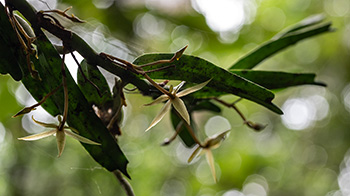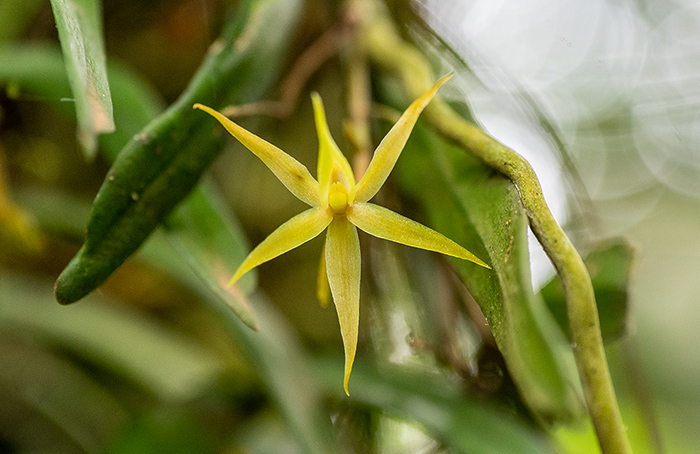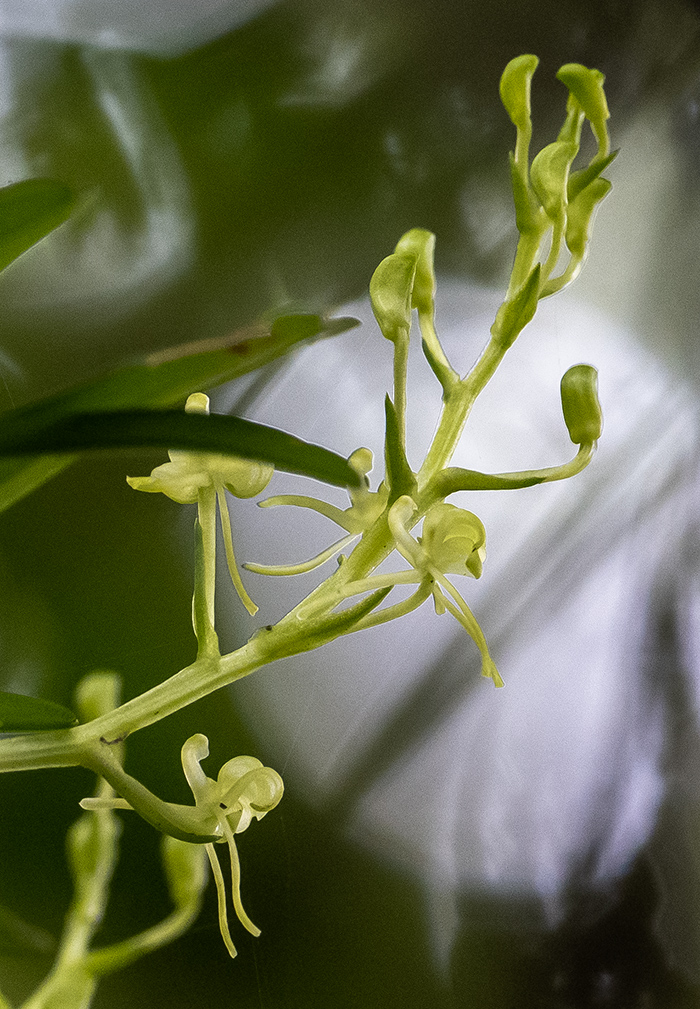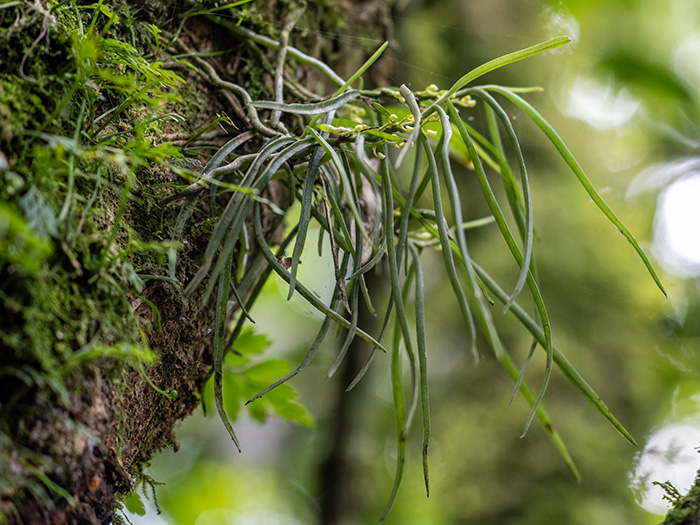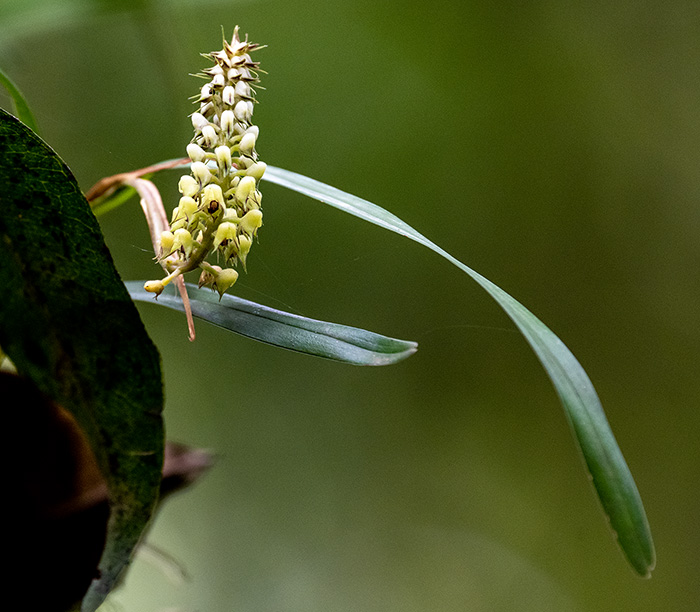Gishwati-Mukura National Park is the youngest in Rwanda. With an area of 34 square kilometers, it is also significantly smaller than Nyungwe, which lies to the south of it, or Volcanoes Park in the north. It is located on the watershed between the Nile and Congo rivers and ranges in altitude from 2000 to 3000 meters.

We have an appointment with the director of the national park, Ezechiel Turikunkiko, who leads us on a narrow path into the rainforest.
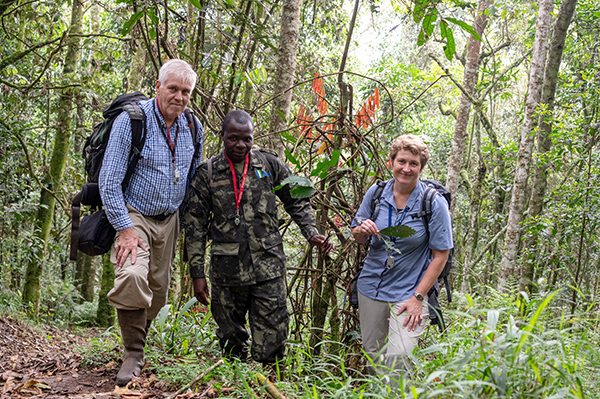
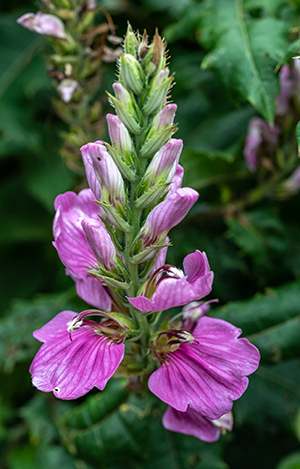
At the upper edge of the forest we see an acanthus plant, Acanthus polystachyus (right). The leaves are used in traditional African medicine against malaria or in case of snakebites, the seeds for treating wounds. As soon as we enter the rainforest, we again encounter Wohlleben's mahogany and Impatiens burtonii, later also Impatiens njamnjamensis.
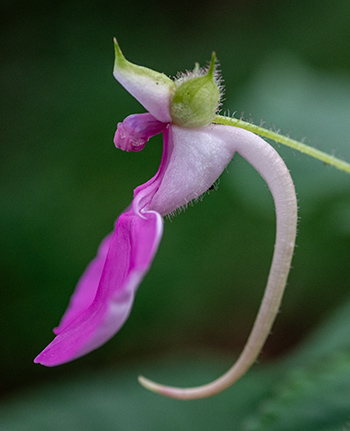 And we study an Impatiens related with Impatiens stuhlmannii, which we are unsure of the identification. The upper helmet-like petal is clearly brighter than in Impatiens stuhlmannii, also brighter than the unknown Impatiens from Cyamudongo Forest.
And we study an Impatiens related with Impatiens stuhlmannii, which we are unsure of the identification. The upper helmet-like petal is clearly brighter than in Impatiens stuhlmannii, also brighter than the unknown Impatiens from Cyamudongo Forest.
But most importantly, we also see special orchids here! A Tridactyle orchid nestles close to the tree trunk.
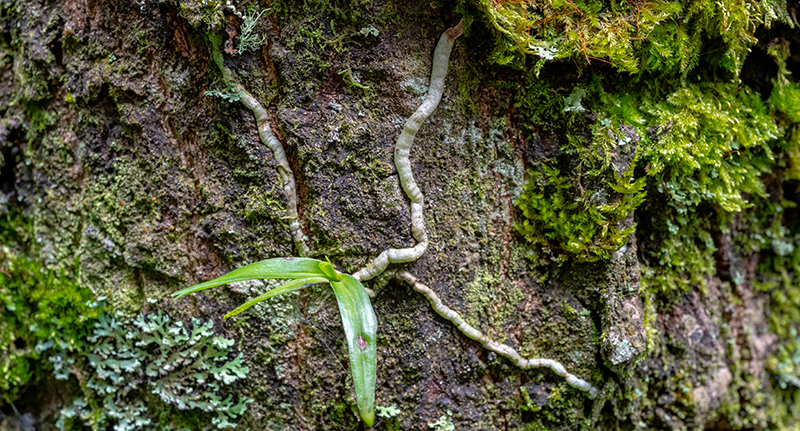
Then we study an Angraecum, previously listed as Angraecum moandense, but here probably a separate species and soon to be described as a new species.
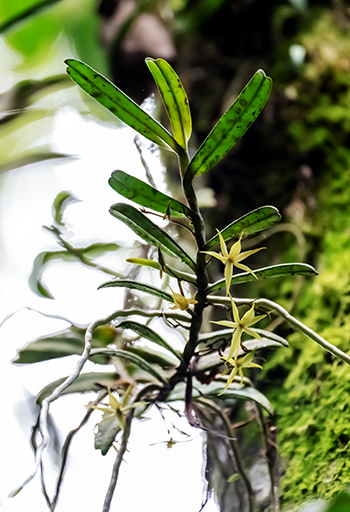
On our way, chimpanzees can be heard briefly. Then we dive again into the Gishwati sound characterized by cicadas.
On a tree grows Liparis epiphytica - the small yellow-greenish flowers with filiform sepals are reminiscent of the Liparis in Europe. The tropical species is distributed from the Ivory Coast to Uganda.
Quite common on our path is a Rhipidoglossum species with long narrow leaves. The plants form straight buds. So far, these plants were considered as Rhipidoglossum globulosocalcaratum, first described in the Congo. But this is a different species, which will be described soon, explains Eberhard.
Other orchids are not yet blooming, but show impressive leaves like Aerangis ugandensis, whose aerial roots are bedded on a bed of moss.
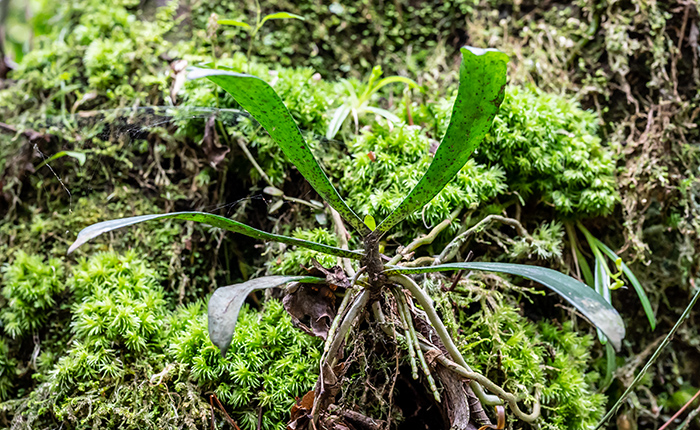
Peperomia fernandopoiana lets its long inflorescences hang down from a mossy branch. It belongs to the pepper family.
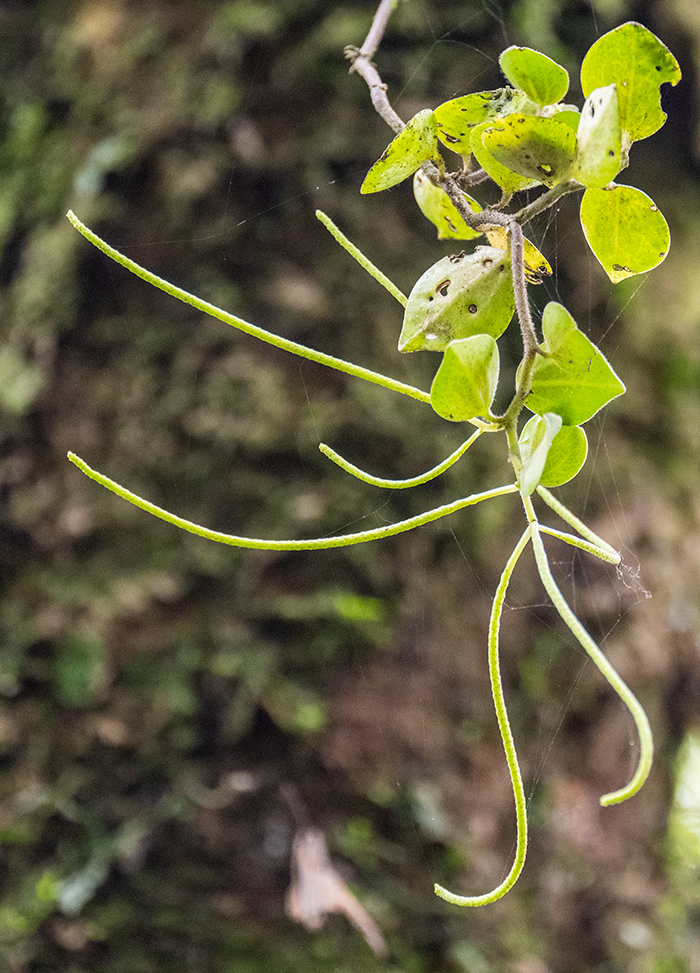
As in Nyungwe, Polystachya adansoniae blooms here, sometimes with a very short inflorescence, sometimes with a longer one.I am impressed by the special leaf shape of a fern, that is Drynaria volkensii. The leaves are used in folk medicine for poisoning.
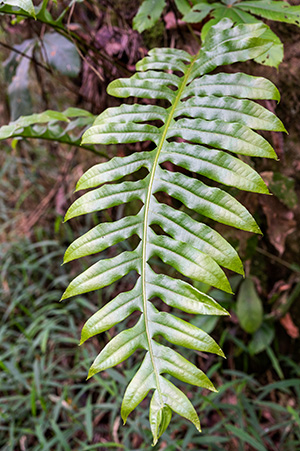
After many special impressions in the Gishwati forest, the day ends in Gisenye with a walk on the shore of Lake Kivu, near the border crossing into Congo, and a special discovery for Eberhard's fern research: the delicate-leaved fern Davallia chaerophylloides grows on a tree - a first find for Rwanda.
